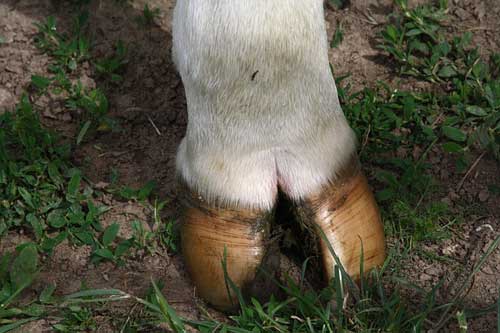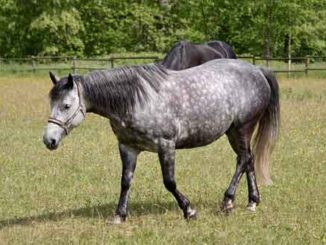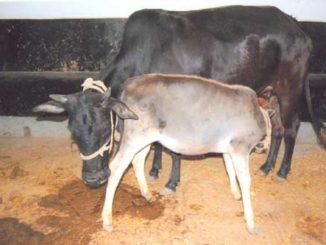Foot rot or “infectious pododermatitis” is a hoof infection found in sheep, goats, and cattle. In this infection the toes of a cloven-footed animal rots away, specifically the area between the two toes of the affected animal causing swelling between the toes, resulting in severe pain and lameness.
Foot rot is caused by the infection of two species of anaerobic bacteria in cattle namely, Fusobacterium necrophorum and Bacteroides melaninogenicus, however most of the time the bacteria responsible for foot rot is Fusobacterium necrophorum. These are anaerobic bacteria, meaning they thrives in environments without oxygen. These organisms are found in the rumen and fecal matter of the cattle. These anaerobes usually gains entry to the foot through any injury to the skin between the hooves. Foot rot in sheep and goats caused by Dichelobacter nodosus bacteria. The disease is different in cattle and sheep and cross-infection usually not occur.

Clinical Sign and Diagnosis
- Sudden lameness in one or more animals.
- Skin between the claws of the hoof begins to swell (cellulitis)
- Feet reveals moist, red skin between the claws that is covered by a film of grey exudation.
- There is slight to severe separation of the hoof horn from the underlying soft tissue.
- Animal may also have a high body temperature.
- The foot will have a foul characteristic odor similar to rotten cheese.
- Close examination of the foot will reveal a foul smelling, necrotic ulcer occupying the inter-digital cleft.
Treatment
Foot rot is treated with antibiotic, It responds well to most broad spectrum antibiotics if treated early. The best thing however, is to consult your nearest Veterinary Doctor, as he knows better which drug might be best under the specific circumstances. most commonly used systemic antibiotics for the treatment of foot rot are procaine penicillin and oxytetracyclin. Using proper systemic antibiotic and dry floor condition usually resolve even severe lameness after a few days. Topical aerosol spray of cetrimide or oxytetracyclin are also helpful. Foot bathing in formalin or zinc sulphate (with surfactant) is also an option.
Prevention
- Preventing injury to the feet is the best way to prevent foot rot.
- Avoid muddy wet conditions.
- Early identifying the disease as foot rot can easily be treated in early stage.
- Specific strain vaccines have been developed, but their efficacy is questionable and they provide very short duration immunity.
|
The content of the articles are accurate and true to the best of the author’s knowledge. It is not meant to substitute for diagnosis, prognosis, treatment, prescription, or formal and individualized advice from a veterinary medical professional. Animals exhibiting signs and symptoms of distress should be seen by a veterinarian immediately. |






Be the first to comment